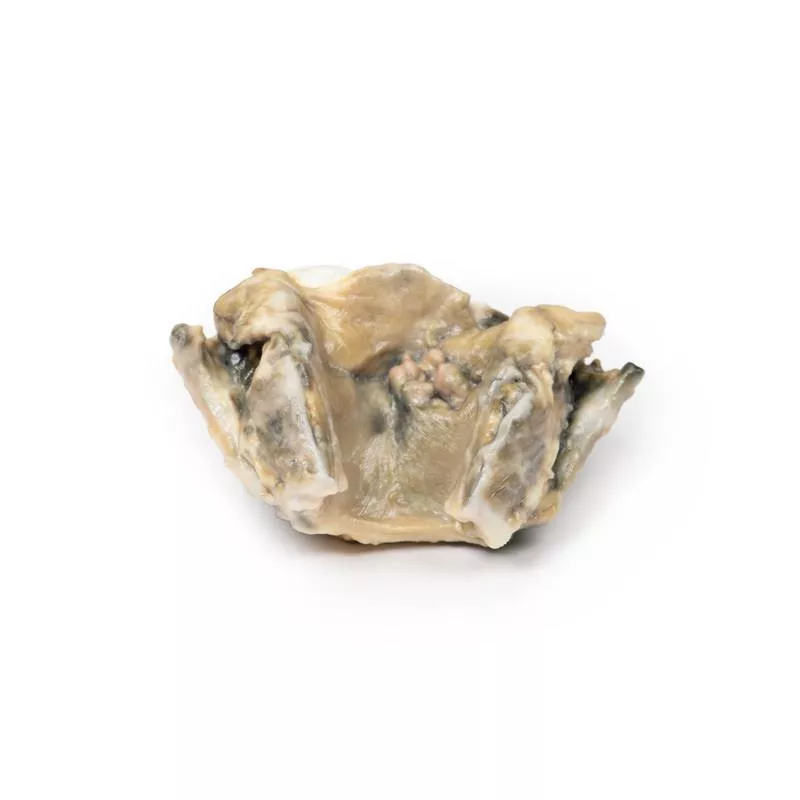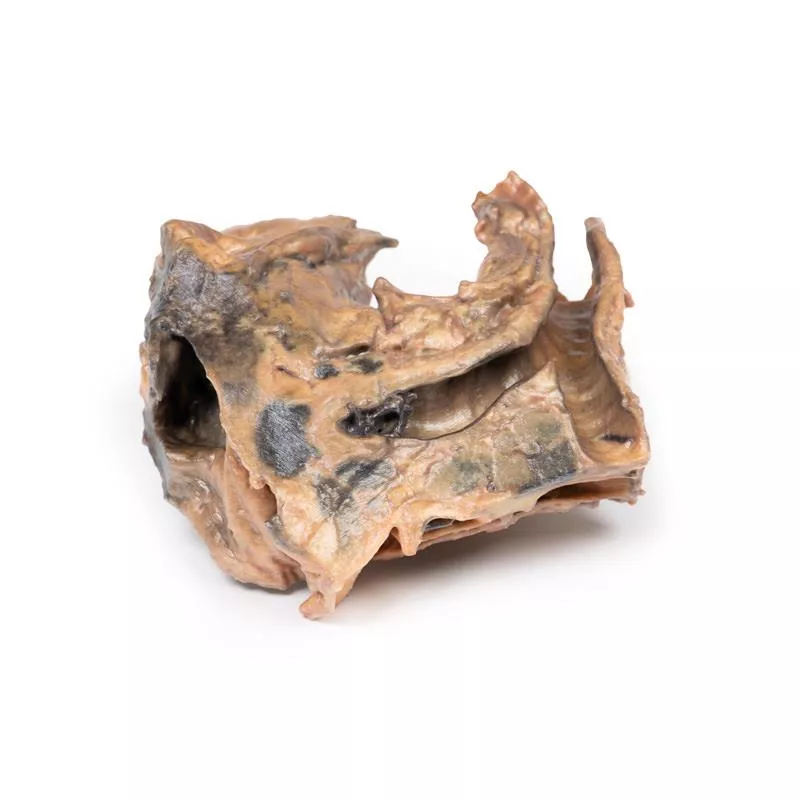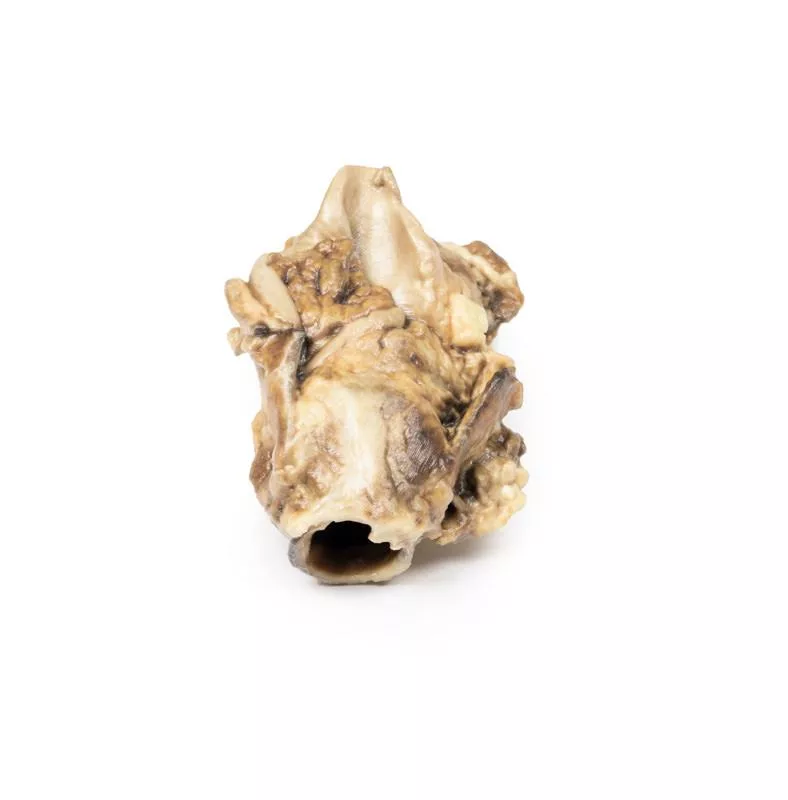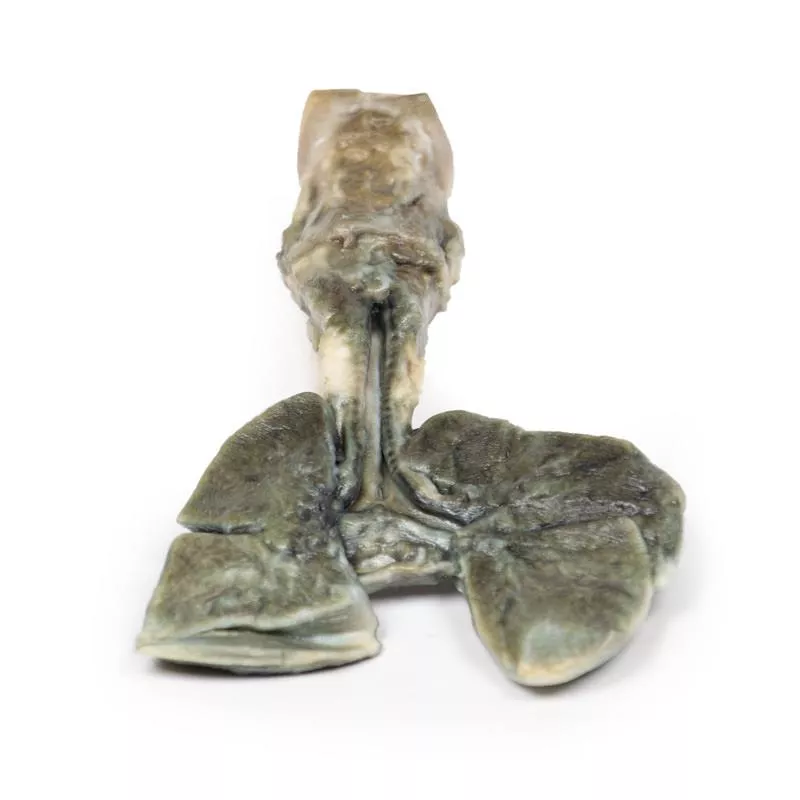Product information "Carcinoma of Larynx"
Clinical History
A 47-year-old man presented with a 13-month history of dysphonia and odynophagia around the thyroid cartilage. He had a significant history of smoking. Imaging revealed a laryngeal tumour. He underwent radiotherapy followed by laryngectomy. Unfortunately, pulmonary metastases were detected six months later, and he passed away shortly after.
Pathology
The specimen shows a posterior view of the larynx opened longitudinally. A large ulcerating tumour distorts the right vocal cord, with visible mucosal congestion. Histology confirmed a well-differentiated squamous cell carcinoma (SCC).
Further Information
More than 95% of laryngeal cancers are SCCs. These tumours typically originate on the vocal cords but can also affect the epiglottis, aryepiglottic folds, or pyriform sinuses. The disease often begins as carcinoma in situ and may progress to an invasive form if exposure to carcinogens such as tobacco and alcohol continues. Other risk factors include HPV infection, asbestos exposure, and radiation. The condition occurs more often in men, mostly in their 60s.
Laryngeal cancer can spread locally, to cervical lymph nodes, or via the bloodstream—most commonly to the lungs. Symptoms include dysphonia, dysphagia, odynophagia, globus sensation, and cough. Less frequent signs are haemoptysis, dyspnoea, or halitosis.
Treatment depends on staging. Early-stage therapy may focus on organ-preserving techniques like laser treatment, microsurgery, or radiotherapy. Advanced stages often require a combination of laryngectomy, radiotherapy, and chemotherapy. Smoking and alcohol cessation remain essential across all stages.
A 47-year-old man presented with a 13-month history of dysphonia and odynophagia around the thyroid cartilage. He had a significant history of smoking. Imaging revealed a laryngeal tumour. He underwent radiotherapy followed by laryngectomy. Unfortunately, pulmonary metastases were detected six months later, and he passed away shortly after.
Pathology
The specimen shows a posterior view of the larynx opened longitudinally. A large ulcerating tumour distorts the right vocal cord, with visible mucosal congestion. Histology confirmed a well-differentiated squamous cell carcinoma (SCC).
Further Information
More than 95% of laryngeal cancers are SCCs. These tumours typically originate on the vocal cords but can also affect the epiglottis, aryepiglottic folds, or pyriform sinuses. The disease often begins as carcinoma in situ and may progress to an invasive form if exposure to carcinogens such as tobacco and alcohol continues. Other risk factors include HPV infection, asbestos exposure, and radiation. The condition occurs more often in men, mostly in their 60s.
Laryngeal cancer can spread locally, to cervical lymph nodes, or via the bloodstream—most commonly to the lungs. Symptoms include dysphonia, dysphagia, odynophagia, globus sensation, and cough. Less frequent signs are haemoptysis, dyspnoea, or halitosis.
Treatment depends on staging. Early-stage therapy may focus on organ-preserving techniques like laser treatment, microsurgery, or radiotherapy. Advanced stages often require a combination of laryngectomy, radiotherapy, and chemotherapy. Smoking and alcohol cessation remain essential across all stages.
Erler-Zimmer
Erler-Zimmer GmbH & Co.KG
Hauptstrasse 27
77886 Lauf
Germany
info@erler-zimmer.de
Achtung! Medizinisches Ausbildungsmaterial, kein Spielzeug. Nicht geeignet für Personen unter 14 Jahren.
Attention! Medical training material, not a toy. Not suitable for persons under 14 years of age.







































